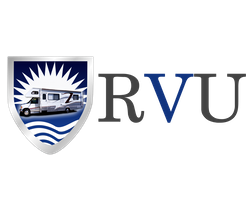Every build begins on the fabrication floor, where laser-guided welders assemble an automotive-grade chassis and running gear. Modern electro-coating booths—capable of treating up to 15,000 parts a day—seal the steel against corrosion before the frame ever leaves the first bay.
A Precision Platform
Next comes the sub-floor. Computer-cut plywood panels are bonded to the chassis with structural adhesive and self-tapping screws, forming a rigid deck that can accept more than three tons of combined furniture, tanks, and slide-out hardware without flexing.
Furniture First
Because cabinetry is easier to install before the sidewalls go on, most plants move straight to furniture. CNC routers cut hardwood panels for cabinets and wardrobes to within a fraction of a millimeter, then robotic sprayers finish the pieces with water-borne varnish that cures in minutes instead of hours.
Laminate Walls and Ready-Made Slide-Outs
Vacuum-bonded walls—foam core, aluminum framing, and gel-coat fiberglass—cure in climate-controlled presses before rolling to the main line. Integrated slide-out boxes, pre-wired and insulated, are craned into place as complete modules, shaving hours off assembly time.
Roof Drop and Weather Test
A one-piece fiberglass roof is lowered as a single section. Interlocking aluminum extrusions tie roof and walls together in what amounts to a giant torsion box. Finished shells spend ten minutes under a 50-inch-per-hour water barrage; anything that drips fails and is rerouted for re-seal.
Systems, Trim, and Final Inspection
Wiring harnesses, PEX plumbing, propane lines, and HVAC runs are color-coded and clipped into preset channels. After appliances and soft goods go in, each coach enters a pre-delivery inspection (PDI) lane where technicians run more than 200 function checks before scanning the VIN into the shipping queue.
What's Changed Since the 1929 "Covered Wagon"
- Structural materials. Early coaches relied on hand-cut wood framing; modern builds use CNC-cut composites and light aluminum that shave off weight while adding strength.
- Roof construction. Where tar-paper once kept rain at bay, a single-piece fiberglass or PVC membrane now seals the coach in one step and lasts decades longer.
- Leak testing. Inspectors used to hose down finished units by hand; today high-pressure rain booths drench each rig for a timed cycle, flagging even pin-sized drips before it leaves the line.
- Plant output. A 1920s factory might push out a dozen units in a week; a current assembly line can finish 20–30 towables in a single eight-hour shift thanks to automation and modular sub-assemblies.
Production Volumes in 2024-25
Industry-wide shipments climbed to 333,733 units in 2024, roughly 915 finished coaches every day across North America. The RV Industry Association projects 320,400–353,500 units for 2025, a slight uptick that would keep plants in Elkhart, Forest City, Sugarcreek, and beyond running near current speed.
Modern automation, tighter leak testing, and in-house lamination allow today's factories to turn raw steel into a road-ready RV in a single eight-hour shift—sending a steady stream of new rigs toward the very parks and resorts our students analyze in class.

